Today’s blog covers a topic that is common but which often still causes headaches for projects in which companies want to integrate their telephone systems (PBX, Call Center, Contact Center) with their computer management systems (typically CRM). CTI integrations.
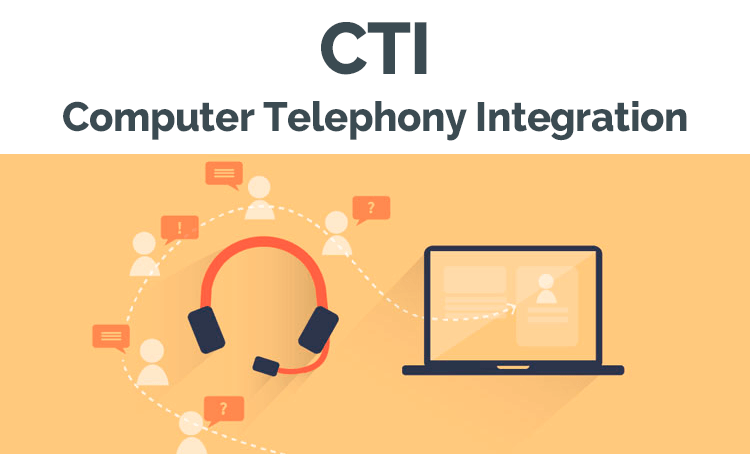

But let´s start with a bit of history – what are CTI integrations?
CTI (Computer Telephony Integration) is the technology that emerged to address the need to integrate telephone systems with computer systems in companies. In the first call centers (the term used back when the communication channel was voice-based, since there were no others), outgoing calls were made by agents manually entering phone numbers. These phone numbers were on long paper lists… and if the center received an incoming call it was unable to identify the caller and provide the agent with contextual information. As the technology of both telcos and information systems/personal computers progressed, management software reached call center agents and hence the interest in and need to connect two technologically independent “worlds” arose (the agent would place a call manually and use management programs for non-phone-related work).
It was in this context that CTI emerged as a “saviour” technology to facilitate agent work and become a true tool for productivity. Also, and very importantly, it entailed a quantum leap in improving customer quality provision by call centres.
The emergence of VoIP technology (voice encapsulated over an Ethernet network and transmitted as data) and the subsequent popularisation of softphones (the phone terminal was no longer needed and was replaced by the multimedia capabilities of computers) marked a revolution in the industry and definitively signalled the path to follow.
From those early days through to now, CTI technology has gone through different stages featuring partnerships among the leading industry players promoting different standards.
Salesforce is compatible with the Open CTI standard which allows us to connect the Salesforce organisation with our telephone system (PBX, Call Center, Contact Center). Below is a typical integration-block scheme:
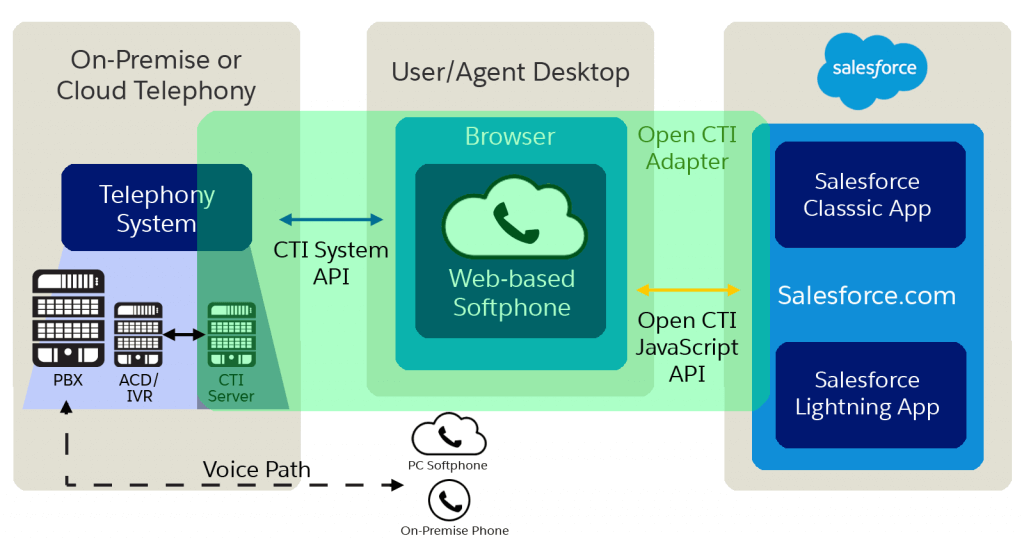
Key benefits of adopting a CTI integrations solution at our company
As we have seen, the origins and development of this technology were linked to the world of call centers, but you don’t have to place or receive huge numbers of phone calls to benefit from this type of CTI integration. The main advantages of a solution of this type are:
Click-to-call
From our CRM system we can position ourselves on a customer, partner or supplier record, select the contact person we want to talk to and direct dial by clicking the phone number. The call will be sent to our softphone. The call will be very efficient because we have all the necessary contextual information and can record and modify matters on the customer, partner or supplier information sheet. The picture shows how we can enter the phone number, of a lead in this case, and the way the softphone opens on the screen:
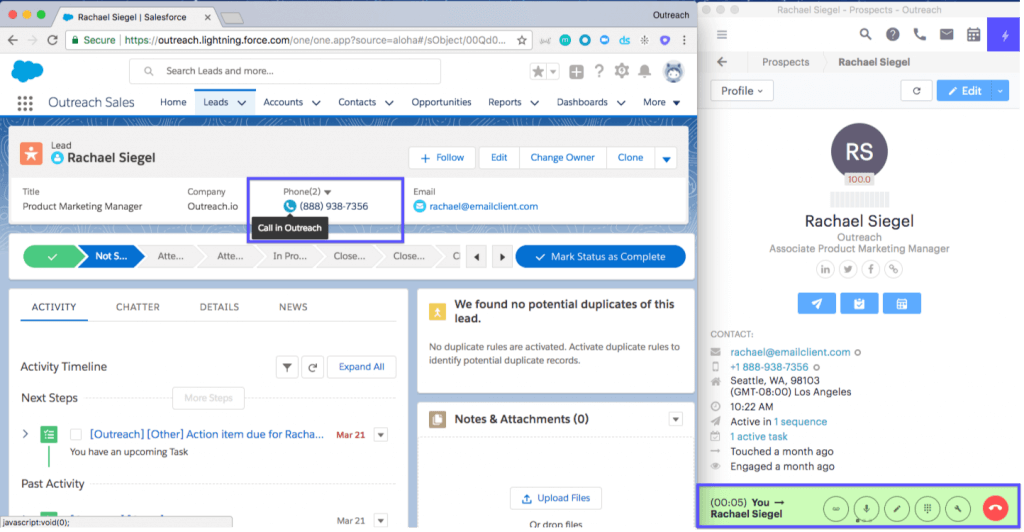
Screen Pop
By using Automatic Number Identification (ANI), staff answering company calls can receive a screen pop with caller information on their desktop, meaning they just have to click their mouse to transfer the call to their softphone. Importantly, the best screen associated with the caller will also appear on their CRM desktop, with all the information to assist them. This lets companies offer a personalised and highly efficient service for customers, partners and suppliers. Check the pic to see how it works:
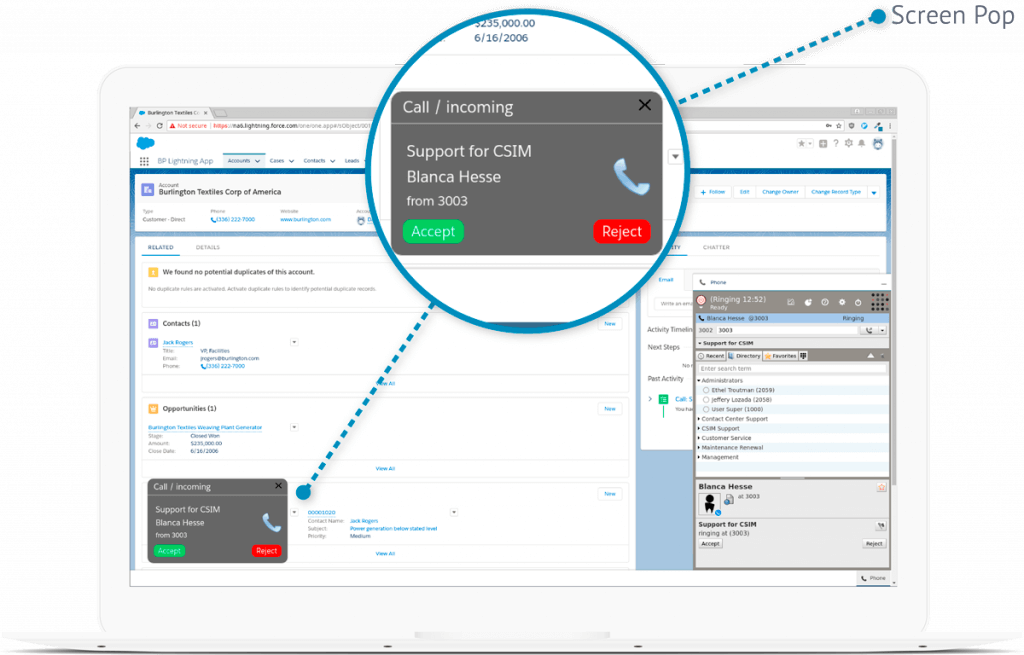
Contact Center
Contact centers are the evolution of call centers. This evolution has been associated with the emergence of new communication channels for inbound and outbound iterations. Although voice is still the leading channel in contact centers, other consolidated ones include email and chat. Social networks and even WhatsApp have also become very important, depending on the type of company. This omnichannel retailing panorama throws out a technological challenge to contact centers which must provide a quality experience across all iterations.
- Quick turnaround
- Personalised treatment
- Omnichannel experience
- Mobility, of course!
- Line maintenance
- Contextual information in agent’s possession
- Seamless experience, no forwarding
- First call resolution
- Self-service capabilities
Contact center agents have also raised the bar on their demands. What do they expect?
- Quality work environment, cutting-edge technology
- A console integrated with all channels and unified feed management
- Available and integrated scaling resources and knowledge
- Teleworking capabilities
- With this outlook, companies are facing major challenges which, apart from those inherent to the related activity (increase in FCR, NPS, etc.), include ones based on choosing a platform that is technologically efficient, scalable and which lets them deliver on customer and agent expectations.Special mention must go to the voice channel – we have already said it still plays a major role and involves a subset of specific needs, such as IVR (menus, keyword, natural language), recording and self-dialling, among others.
One of the great challenges in this context is route iteration. The aim is to provide each agent with the iterations they need on their profile and the channels they are skilled in, all in an SLA compliant enviroment.
The Salesforce omnichannel widget integrated with a leading VoIP player solution we can find in AppExchange is a brilliant solution for integrating all existing channels in our contact center.
It is very important to define which solution will be required to route iterations to the agent. This decision will be taken on the basis of the solutions to be integrated at the end of the day.
The picture shows the Service Console with OmniChannel:
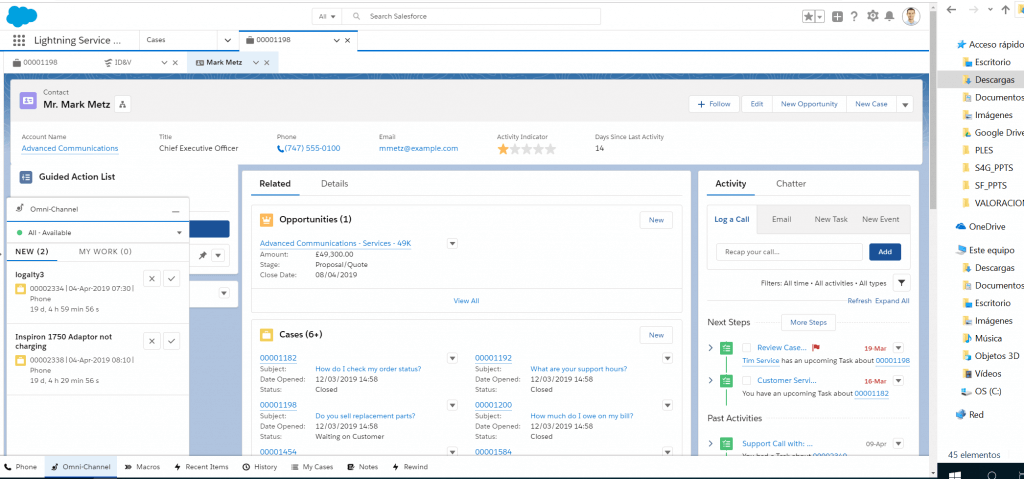
It is obviously in contact center environments where these types of CTI integrations have the most value and shine brightest.
At S4G we are pleased to analyse our customers’ and prospective customers’ requirements to offer them the solution best suited to their needs. The many successful projects we have undertaken are our greatest quality guarantee.


